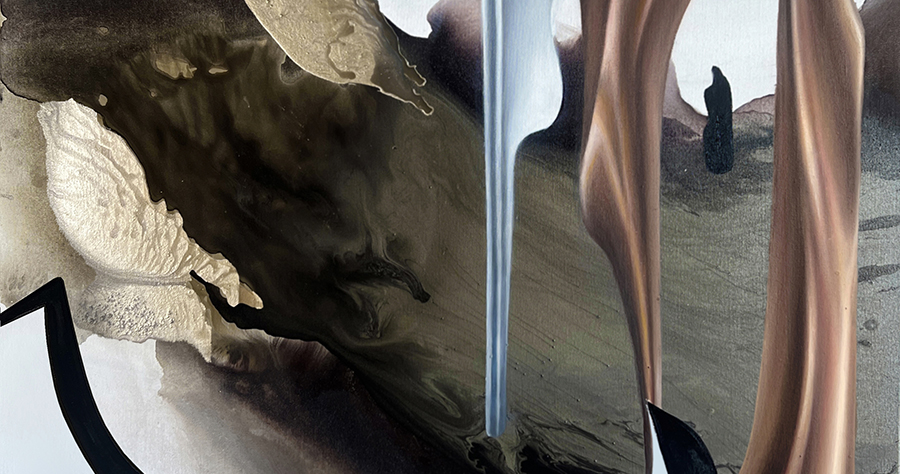3-B Gallery, CICA Museum
October 16 – 20, 2024
2024.10.16 – 20
Postcards From Other Worlds
In Postcards From Other Worlds, Shilowska Pretto invites the spectator into an unsettling and unfamiliar territory, disrupting the neural scripts that shape our reality. According to neuroscience, our brains are wired with cognitive maps—deeply ingrained frameworks or “scripts” formed during early development—that govern our perception of identity, action, and potential. These mental models not only define who we are but also limit our behavior, aspirations, and expectations, serving as unconscious constraints on our freedom of thought.
Pretto’s work challenges these cognitive paradigms, utilizing surreal forms, unconventional colors, and otherworldly textures to evoke the sensation of alternate dimensions. Through this sensory disruption, the viewer is forced to abandon their reliance on familiar mental shortcuts, entering a state of cognitive dissonance. In this space of uncertainty, the brain is prompted to create new connections, re-evaluate its rigid scripts, and explore previously uncharted dimensions of meaning. By drawing attention to the limitations of our collective thinking, Pretto opens up a space for creative freedom—an invitation to escape the mental prisons that dictate our perception of self and the world.
Through her art, Pretto offers not just a visual experience, but a neurological one—a stimulus for the mind to transcend its habitual confines and engage in the radical act of self-liberation.
In the works of Shilowska Pretto, the viewer is invited to transcend the boundaries of the familiar and enter an immersive, otherworldly experience. Pretto’s art disrupts the cognitive frameworks that dictate our perception of reality. Her work is grounded in the exploration of neural “scripts”—deeply ingrained cognitive maps that, according to neuroscience, form at an early age and govern our behavior, identity, and expectations. These scripts, while essential to navigating the complexities of life, often become rigid, ultimately limiting our sense of self and the scope of our possibilities.
Pretto’s artistic vision seeks to challenge this neural rigidity. Through her use of abstract forms, surreal landscapes, and bold, often unexpected color palettes, she invites the viewer into an environment where mental shortcuts no longer suffice. The unfamiliar shapes and textures of her compositions force the brain to pause, interrupting its reliance on quick interpretations. In this moment of cognitive dissonance, the viewer is compelled to explore new connections and meanings, engaging in a dialogue with the artwork that transcends conventional boundaries.
At the heart of Pretto’s work is the idea of liberation—liberation from the unconscious mental prisons that define and restrict our existence. Her worlds, populated by fantastical creatures and dimensions, are not just aesthetic creations but vehicles for personal and collective transformation. By immersing oneself in these alternate realities, the viewer becomes acutely aware of the mental scripts that govern their perception. In this way, Pretto’s work serves as a mirror, reflecting the hidden paradigms that limit human potential and offering an invitation to explore the vast possibilities that lie beyond them.
Through her unique visual language, Pretto not only invites viewers to see the world differently but also to reimagine their own identities. She asks: what happens when we step outside the preordained boundaries of our mental maps? What new narratives can we create when we embrace the uncertainty of the unknown? In this sense, her work becomes a powerful tool for self-exploration and societal reflection, offering both a critique of the constraints we impose on ourselves and a vision of the freedom that lies beyond them.
Shilowska Pretto’s art is, at its core, a challenge to the collective unconscious—a call to awaken, disrupt, and ultimately, to redefine the paradigms that shape our world. It is a radical proposition, inviting us to question not only what we see but how we see it, and through that process, to reimagine what we might become.

